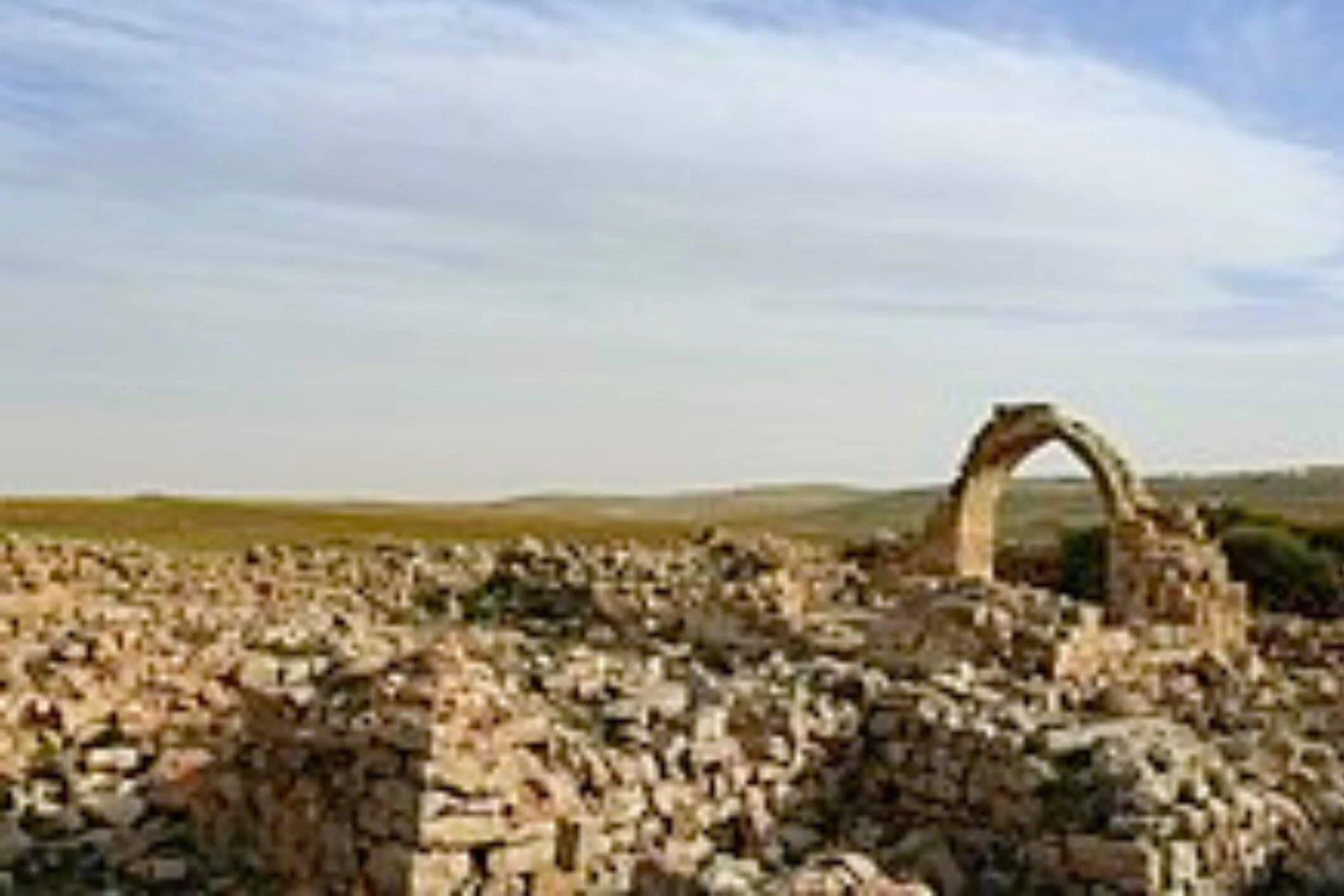The Battle of Muta took place here

This is the location near Kerak, Jordan, where Muslims fought a notable fight
against a combined Byzantine/Ghassanid force in the year 629 CE, during
the lifetime of the Prophet Muhammed. The Battle of Muta took place here.
One of the epistles (letters) issued by the Prophet ( ) to several kings, welcoming
them to Islam was sent to the King of Bursa by Haris-bin-Umair Azadi ( ).
When Haris ( ) arrived in Mu’ta, he was assassinated by Sharjeel Ghassani,
one of the Qaiser’s governors. The assassination of the emissary was against
all inter-tribal moral norms. When the news reached the Prophet
he was understandably upset. He gathered a 3,000-strong army to go up against the enemy.
The Muslims were fighting the Byzantines for the first time
(The Roman Empire during the Middle Ages).
“If Zaid is murdered then Jafar-bin-Abi Talib will be your Amir and if he is also martyred
then Abdullah-bin-Rawahah will take charge,” the Prophet () remarked while
nominating Zaid-bin-Haritha () to head the army. If he perishes as well, you may
choose a commander from among yourselves.” “All three must perish,” a Jew who
was listening to this stated. This is exactly how the previous Prophets prophesied.”
The Prophet ( ) presented Zaid with a white flag that he had manufactured himself.
He then walked beside the army for a short distance outside of Madinah, praying for
them and saying, “May Allah bring you back securely and triumphantly
May He protect you from all evils.”
When Sharjeel learned of this army, he prepared a 100,000-strong army and the
Qaiser himself assembled a 100,000-strong army to confront the Sahabah.
When the Sahabah learned of the approaching army, they debated whether
to face such formidable odds or notify the Prophet. Abdullah bin Rawahah
encouraged them to proceed, and they met the army in the Mu’ta battlefield.
The Battle of Muta took place here
A violent struggle occurred, and Zaid-bin-Haritha ( ), followed by Jafar-bin-Abi Talib and
Abdullah-bin-Rawahah was martyred as predicted.
Thabit bin Aqram dashed to receive the flag and raised it high so that
the Muslims would not disperse in disarray when the final leader fell.
Thabit ( ) then presented Khalid-bin-Waleed with the flag and openly invited
Muslims to accept his rule. They unanimously agreed and Khalid-bin-Waleed
became the first Muslim army commander.
The Prophet (saw) was fully briefed on the events of the war when he returned to Madinah.
“Zaid took up the banner and has now been slain,” he () told the Sahabah one morning.
Jafar has now stolen it and is being martyred. Ibn Rawahah, who was also killed took it
.” As I said this, tears welled up in my eyes. “Now a sword from Allah Ta’ala’s swords
has hoisted the flag, and Allah Ta’ala has awarded the Muslims victory,” he said.
The fighting was so intense, according to Khalid-bin-Waleed that he
used nine swords that broke during the battle.
He made arrangements to withdraw from the army after realizing the situation was hopeless.
He fought the Byzantines in skirmishes rather than going to war. The Battle of Muta took place here.
To convey the impression that reinforcements had arrived from Madinah,
he entirely shifted his troop locations and dispatched a rearguard with new flags one night.
Martyrs are now recognized as Muslims who died in warfare (shaheed).
The Muslims had opposed the Byzantines and established their presence
among the Arab Bedouin tribes in the region, therefore this conflict was far from a defeat.
